(2664 products available)

























































































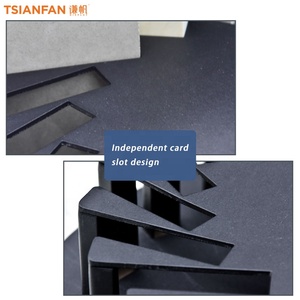









































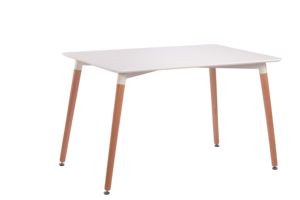








































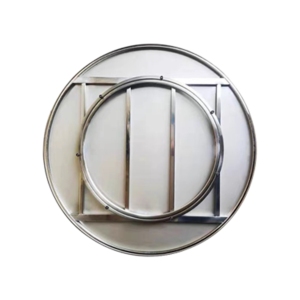

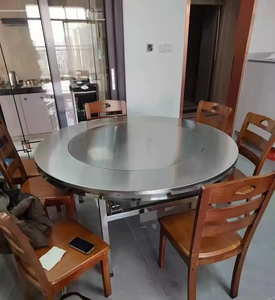














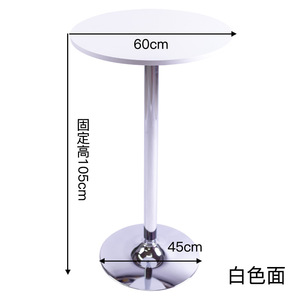





























A rotary table is a type of positioning table that enables the movement of components or workpieces in a circular motion around a central axis. This table design can be classified into two main types: the round or circular table and the index table.
The round or circular table is the most common design for rotary tables. It features a flat, circular platform that rotates horizontally around a fixed vertical axis. This table allows for continuous or intermittent rotation in any direction. Rotary tables usually have a servo motor, gearbox, and bearing mechanism that facilitate precise control and smooth motion. They also come in various table sizes and load capacities to suit different applications. Rotary tables are widely used in manufacturing, assembly, and machining processes that require circular positioning, such as cutting, welding, and inspection.
Index or indexing rotary tables move workpieces or components in discrete steps rather than continuous motion. The rotation angle is predetermined and controlled, allowing for accurate positioning and alignment at specific angles. Index tables come in different configurations, such as horizontal, vertical, and multi-axis options. They often feature a mechanism with a fixed number of stops or detents that provide precise angular positioning. The typical drive mechanisms for index tables include direct drive motors, cam indexers, and worm gears. Each mechanism offers different speed, accuracy, and load capacity. Indexing tables are suitable for applications that require precise angular positioning, such as assembly, testing, and machining of complex parts.
Proper maintenance of the rotary table is crucial to ensure that it functions at optimal capacity over longer periods of time. Here are some tips to help business buyers observe proper rotary table maintenance.
Take time to clean the rotary table on a regular basis. Start by removing loose debris and dirt. Then, use a soft and clean cloth to wipe down the surface. Use a mild detergent or a non-abrasive cleaner to wash off any stuck-on dirt. Be sure to dry the rotary table thoroughly. This prevents rust and minimizes the risk of electrical shock.
Regularly inspect the rotary table for any signs of damage or wear. This includes cracks, scratches, and loose components. Pay close attention to the drive mechanism, bearings, and gear teeth. If any damage is observed, it should be repaired promptly to prevent further complications.
Proper lubrication is important to ensure smooth operation and minimize wear. Refer to the manufacturer's instructions to identify the lubrication points and recommended lubricants. Business buyers should develop a lubrication schedule and adhere to it. When lubricating the rotary table, apply the appropriate amount of lubricant.
Risk of electrical shock is a common safety concern when maintaining rotary tables. Ensure the rotary table is completely disconnected from any power source before performing maintenance. Once connected, the power cords and plugs should be securely fastened.
Rotary tables have different applications in industries that require automation, such as CNC machining, assembly, and packaging. Here are some applications of rotary tables in different industries:
In manufacturing industries, rotary tables are mainly used in automated assembly lines for grouping together components. For example, in the automotive industry, rotary tables are used to assemble car engines. In the electronics industry, rotary tables can be used to assemble electronic devices. The rotary table can be precisely positioned to ensure that each component is assembled in the correct orientation. This can help to improve the efficiency and accuracy of the assembly process.
In the food and beverage industry, rotary tables are often used for product packaging tasks such as filling, capping, and labeling. The rotary table can be divided into different stations, and each station can complete a specific packaging task. For example, one station can be used for filling, while another station can be used for capping. The rotary table can transport the products between different stations, realizing the automation of the packaging process. This can help to increase the production speed and consistency of the packaging process.
In manufacturing industries, rotary tables can also be used for quality inspection tasks. The rotary table can transport the products to different inspection stations, where they can be inspected for defects, dimensional accuracy, and other quality parameters. The rotary table can provide a way to systematically and efficiently inspect products. This can help to ensure the quality of the products and identify and resolve any issues in a timely manner.
In the metal processing industry, rotary tables can be used for heat treatment processes such as annealing, quenching, and tempering. The rotary table can transport the workpieces between different heating and cooling zones, allowing for uniform heating and rapid cooling of the workpieces. This can help to improve the metallurgical properties of the workpieces and achieve the desired material properties.
When selecting rotary tables for automation, it's essential to consider application requirements and compatibility with other equipment. Start by defining the specific application needs and objectives. Some of the critical factors to consider include the required workpiece size and weight capacities, the number of axes needed for the application, and the desired indexing or continuous rotation capabilities.
It's also important to choose a rotary table that can support the required workpiece size and weight capacity. Different models and sizes of rotary tables have various maximum load capacities. Be sure to select one that can handle the weight of the workpiece.
When choosing a rotary table for automation, it's also important to ensure it is compatible with other equipment and systems. This includes confirming that the rotary table's controller and interface can connect and communicate with the automation system being used. Ensure that the tooling and workpiece fixtures can be easily integrated with the rotary table. Compatibility is essential for seamless operation and efficient automation processes.
Evaluate the rotary table's motion control and positioning accuracy. Depending on the application, the precision and accuracy of the rotary table may be critical. Consider the rotary table's motion control system and the type of positioning feedback it uses. For applications that require high precision, such as machining or assembly tasks, choose a rotary table with a motion control system that can achieve the necessary accuracy. Finally, consider the cost, including the initial investment and long-term maintenance expenses. Compare different rotary table models to find one that offers the best value for the specific automation needs and long-term performance.
Q1: What are the benefits of integrating a rotary table into an automated manufacturing system?
A1: Rotary tables improve efficiency by allowing seamless transfer of workpieces between different processing stations without manual intervention, which in turn accelerates the entire production process. Secondly, rotary tables enhance accuracy by ensuring that workpieces are consistently positioned and aligned during machining, resulting in precise and repeatable manufacturing. Furthermore, Rotary tables can boost flexibility by supporting multiple machining operations on a single workstation, enabling diverse product processing without the need for additional equipment.
Q2: How can business buyers optimize rotary table performance?
A2: Business buyers can optimize the performance of their rotary tables by ensuring proper alignment and calibration of the rotary table with its controlling software and other automation systems. Additionally, regular maintenance, such as lubrication and cleaning, is critical to ensure smooth operation and longevity of the rotary table. Business buyers can also optimize performance by selecting a rotary table that matches their application requirements, such as the appropriate size, load capacity, and speed range.
Q3: Are there innovations in rotary table technology that business buyers should be aware of?
A3: In recent years, some innovative development has been made in rotary table technology. For example, the emergence of smart rotary tables equipped with sensors and connectivity features allows for real-time monitoring of performance and integration with Industry 4.0 systems. Another example is the development of lightweight and compact rotary tables, which are suitable for space-constrained applications.
Q4: What are the common challenges when using rotary tables in manufacturing settings?
A4: One challenge is the integration of rotary tables with existing automation systems, such as ensuring seamless communication and coordination between the rotary table and other equipment. Another challenge is the programming complexity, which can be addressed by providing training to operators and programmers.
Q5: Do rotary tables require calibration, and if so, how often?
A5: Yes, rotary tables require calibration to ensure accurate positioning and alignment of workpieces. The calibration frequency depends on the specific application and the precision requirements of the manufacturing process. In high-precision applications, more frequent calibration may be necessary, while in others, periodic calibration may be sufficient.